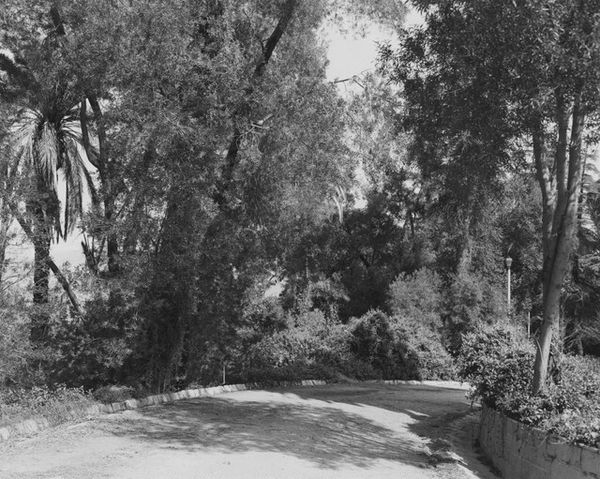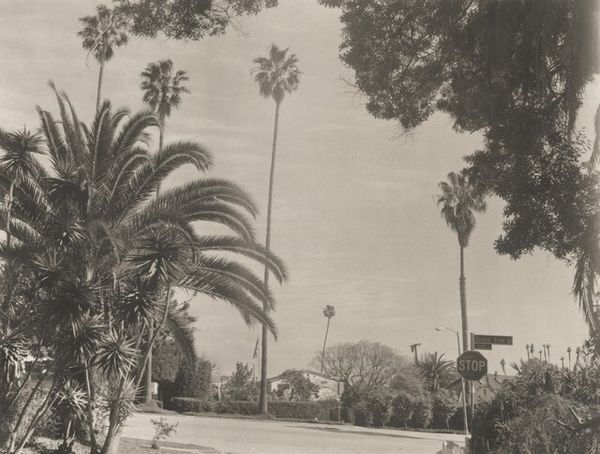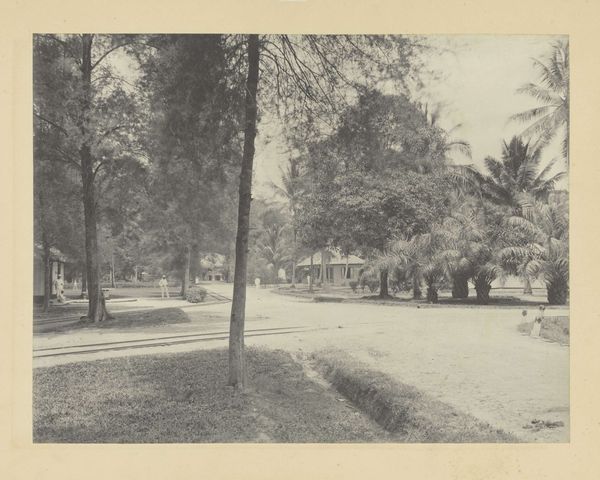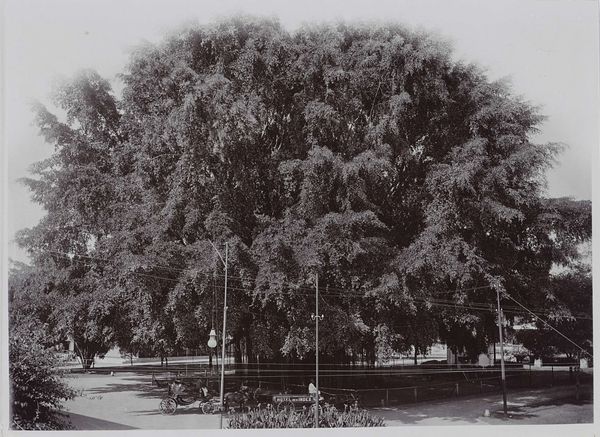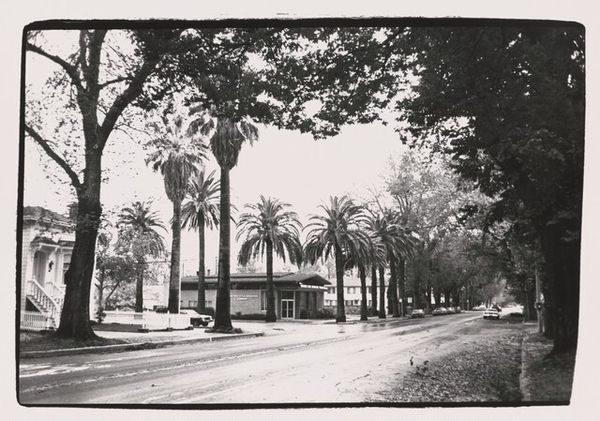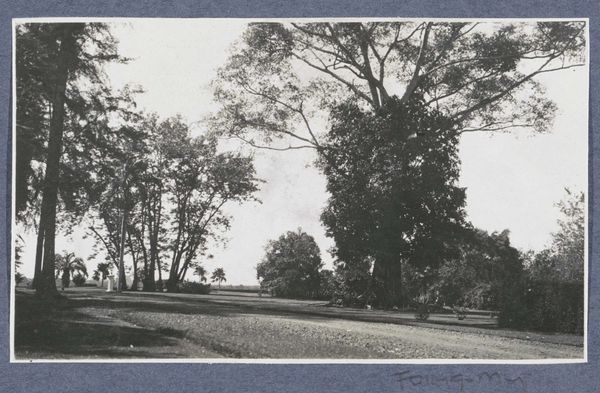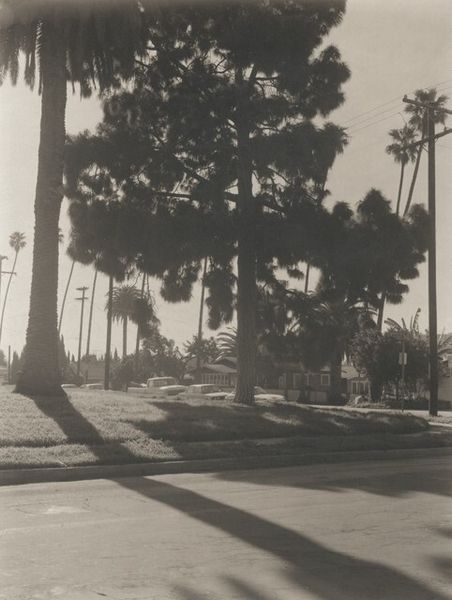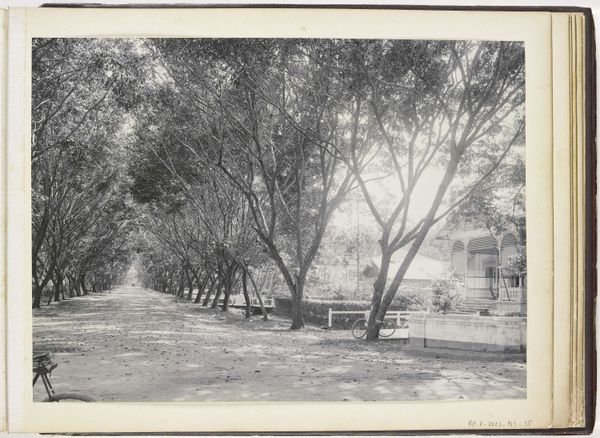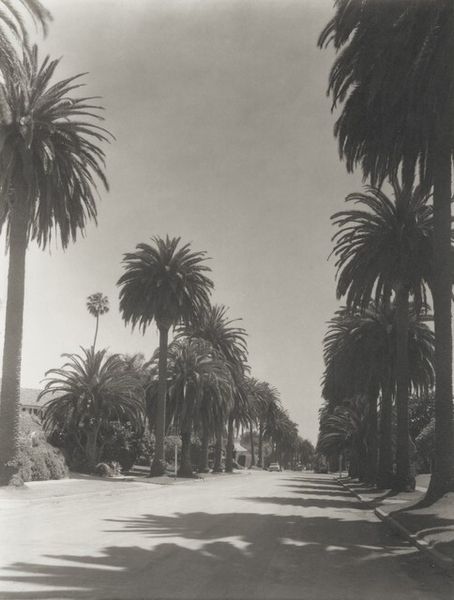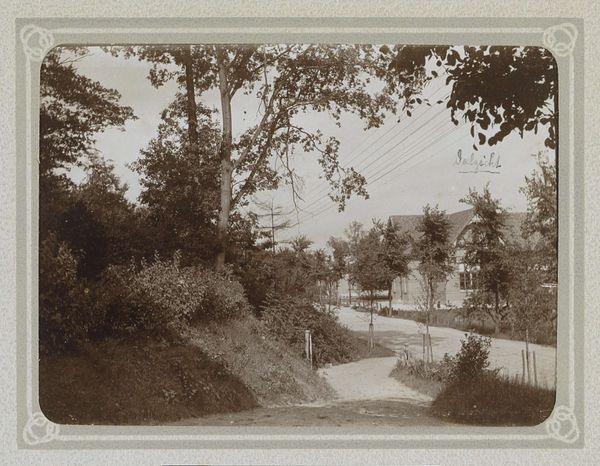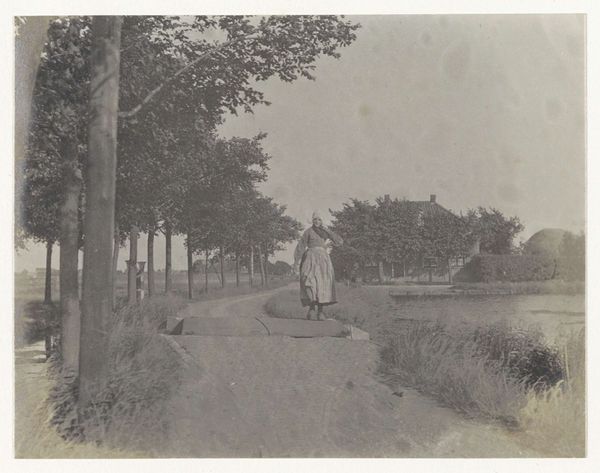
photography
#
black and white photography
#
landscape
#
street-photography
#
photography
#
monochrome photography
#
cityscape
Dimensions: image: 25.9 × 34 cm (10 3/16 × 13 3/8 in.) sheet: 35.1 × 42.5 cm (13 13/16 × 16 3/4 in.)
Copyright: National Gallery of Art: CC0 1.0
Editor: Here we have Madoka Takagi's "7th Street, Santa Monica," likely from 1994 or 1995. It's a black and white photograph, and it really gives off this feeling of quiet suburban life, almost like a still from an old movie. The composition, with the road leading into the distance and framed by trees, is so deliberate. What do you see in this piece from a more formal perspective? Curator: The interplay of light and shadow is critical to the photograph's success. Note the stark contrast, typical of black and white photography. It's not just representational, but an exploitation of tonal values. Consider, too, how the texture of the trees contrasts against the smoother road surface. Do you find this juxtaposition impactful? Editor: Absolutely. The textures create a sense of depth and draw the eye into the composition. It keeps you from getting lost. How does the composition contribute to its formal qualities, if we look closely? Curator: Observe the way the photographer uses leading lines – the road itself, the converging branches – to create a sense of perspective and guide the viewer's eye. The geometry present in the photograph isn't accidental, but part of the composition's deliberate design, influencing its overall effect. The photograph is a clear and powerful composition overall, with very specific choices on how it's balanced. What overall sense do you get from that? Editor: It makes me think about how even the most mundane subjects can be elevated through careful artistic choices. The contrast and geometric choices help reveal beauty in an ordinary street. I never considered looking for underlying geometry within natural settings. Curator: Exactly. It's about recognizing the intrinsic visual qualities and structural integrity, not necessarily some imposed meaning. We see form creating something engaging for the viewer through careful manipulation of what already exists.
Comments
No comments
Be the first to comment and join the conversation on the ultimate creative platform.
